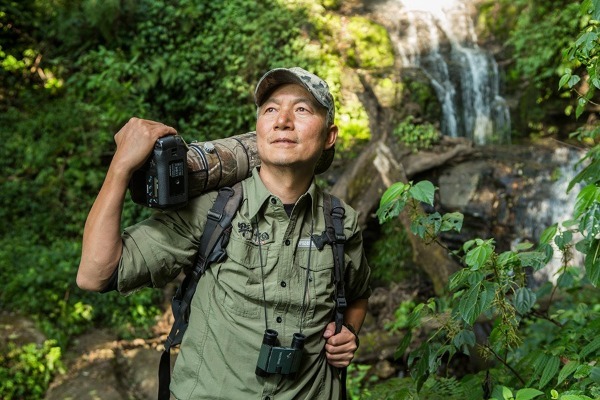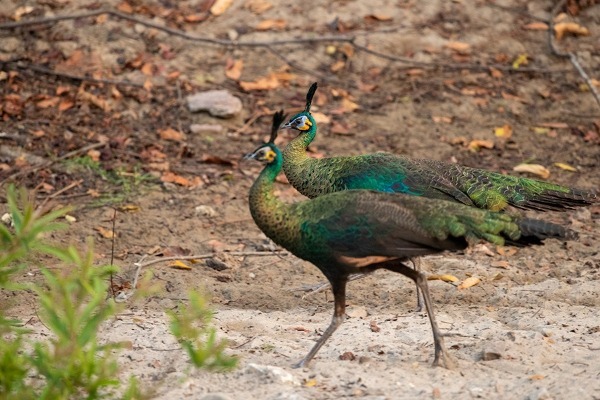 |
|
Xi Zhinong [Photo/Wild China Film] |
In an attempt to raise awareness and foster a deeper understanding of the green peacock, Wild China Film teamed up with college students in Beijing to present the stage play Peacock on the Tip of the Heart at Star Theaters last month.
The audience applauded wildly at the end of the play, and Xi Zhinong and Shi Lihong, founders of Wild China Film, who produce the play based on peacock protection, expressed their gratitude to these amateur actors who, passionate about wildlife, were willing to give so freely of their time.
 |
|
Green peacocks [Photo by Xi Zhinong/Wild China Film] |
Twenty years ago in Lancang River Basin in Yunnan province Xi captured some of the best photos taken of one of the most beautiful birds in China, the flying green peacock. In 2017 when Xi returned to the place where he filmed the green peacock, he was surprised to find that all traces of such birds were gone. So to save this beautiful species, Xi started work on protecting the green peacock, camera in hand.
According to a survey by the Kunming Institute of Zoology, part of the Chinese Academy of Sciences, fewer than 500 of the peacocks may still exist, and it has now become one of China's most endangered wildlife species, even rarer than the giant panda.
Xi has photographed countless rare wild animals, and he is determined to use the images to promote wildlife protection.
"If you do nothing, you may not even change anything," he said. "If you do it, you may affect more people; if more people can do it together, that may bring real changes."
In 1983 Xi started a field investigation hosted by Yunnan University on wild birds in the province, and took part in filming the documentary Bird's Paradise. It was his first exposure to wildlife photography.
By working with photographers he witnessed the serious negative impact of traditional wildlife photography on bird-life, and was horrified by photographers' tactics that included tying the bird on a leash or shocking it to fluster. This gave birth to his photography concept of "not interfering with wildlife".
In 1990 Xi was a photographer for one of China Central Television's most popular and influential programs, Animal World. He twice entered the Dawei Mountain Nature Reserve and the Dulong River Nature Reserve in Yunnan. During the three-month shooting he saw no large wild animals, but instead, the skulls of white wagtail and langur, the fur of impala, the victims of assailants wielding slingshots and crossbows. Xi had earlier been wholly preoccupied by the desire to photograph birds, but he now realized that if people were to be made aware of the importance of protecting the environment, much more than pictures of birds was required.
"A good wildlife work can cut through to people's hearts, and that is the power of nature," Xi said.
"However, to render this authenticity, in addition to high degree of color restoration, the performance of different color gamut is also required. For example, a penguin's body has many gray tones, and there are many in the surrounding environment, too. These tones will produce a very dim picture … Fortunately, with quality lenses and a lot of experience you can get some remarkable shots in terms of gray scale. This effect makes the picture transitions more natural and expressive."